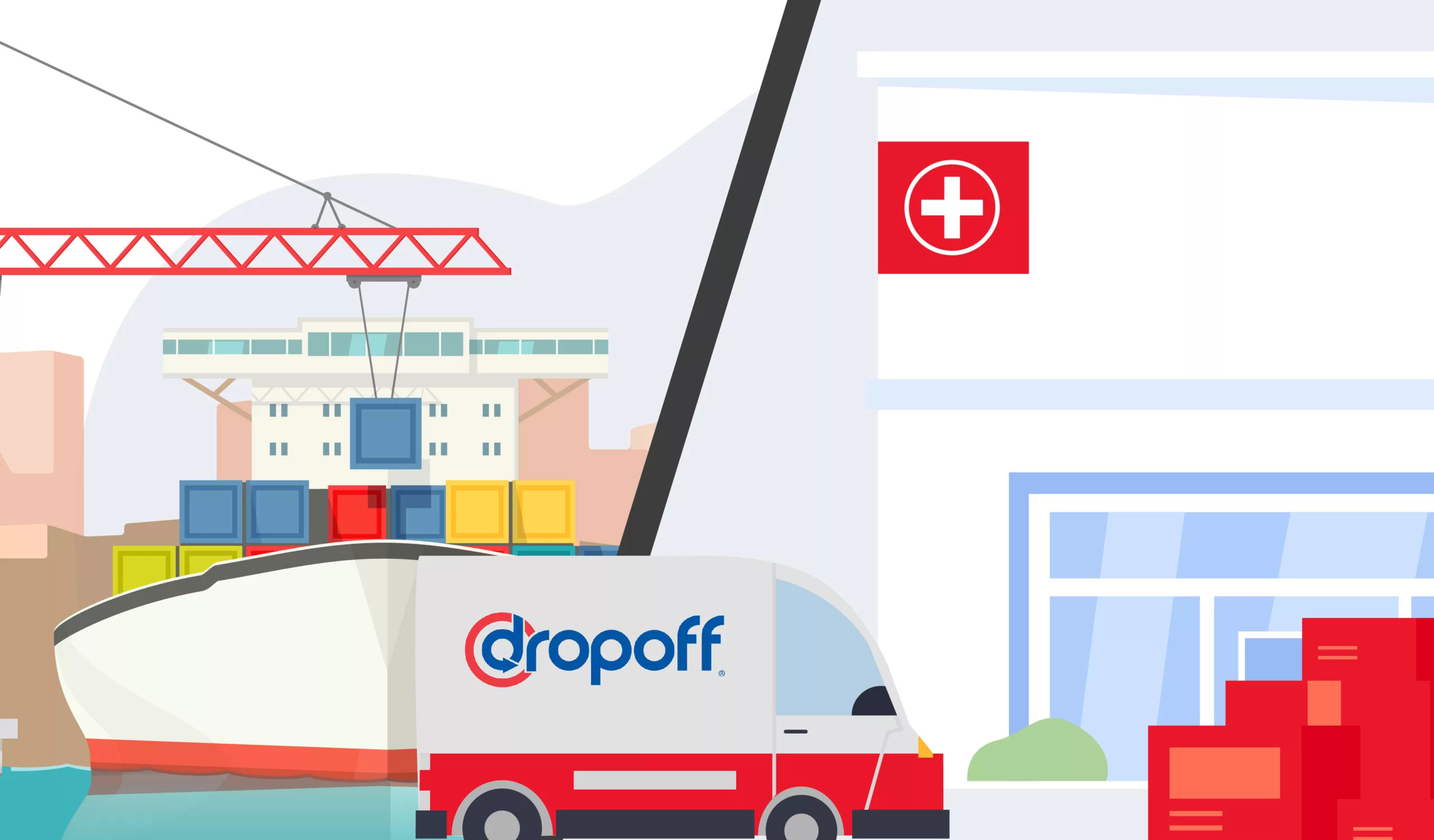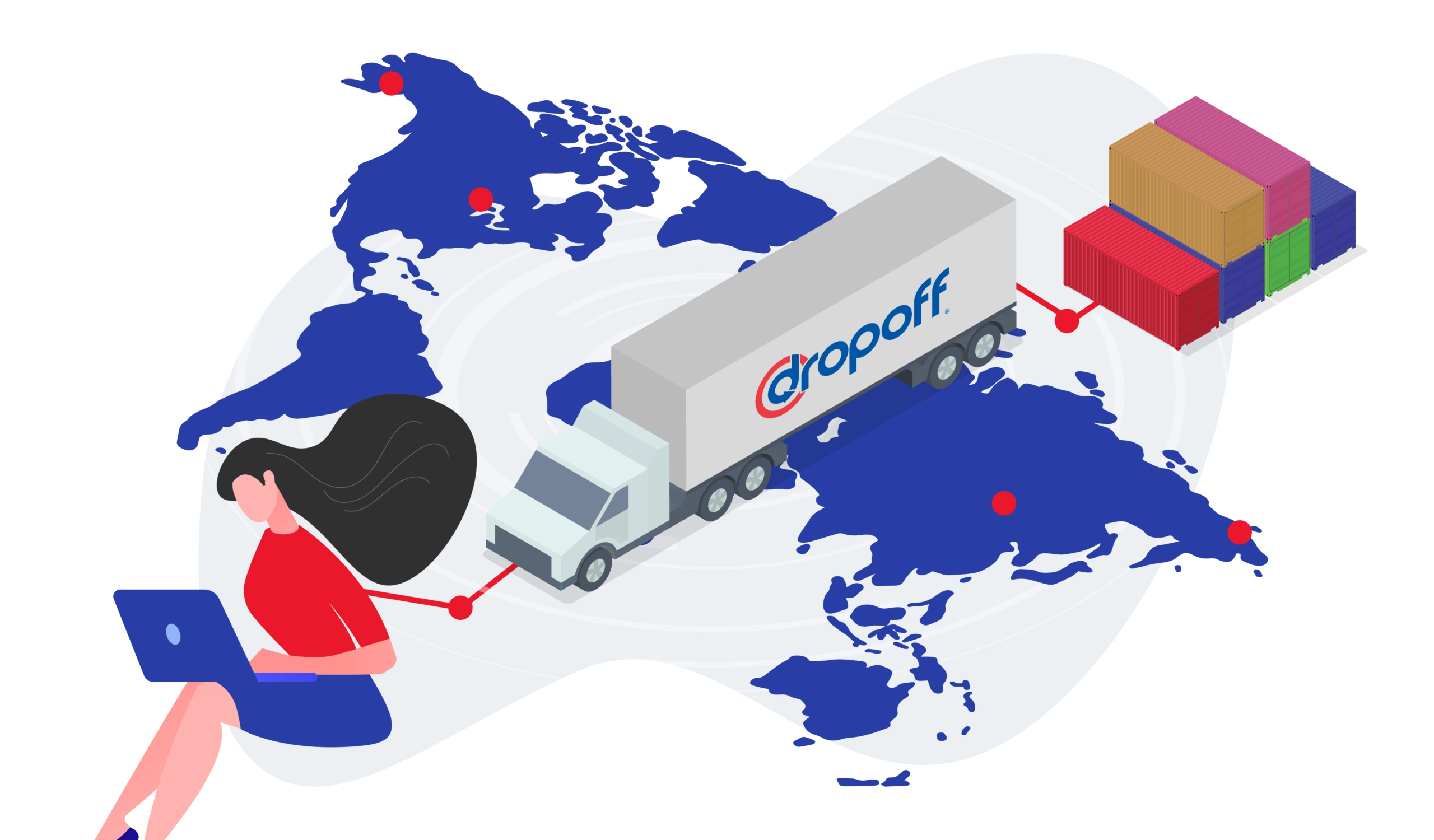Fleet Management Costs: Comprehensive Guide and Optimization Strategies

Fleet management is essential for businesses that rely on transportation for their operations. Effective cost analysis is crucial in maximizing profitability and improving efficiency. This guide examines different fleet management costs and provides actionable strategies for cost reduction and optimization. Dropoff utilizes fleet management to optimize its same-day and last-mile delivery services, ensuring efficiency, cost-effectiveness, and reliability for its clients.
Understanding Fleet Management Costs
Fleet management costs fall into three categories: fixed, variable, and indirect costs. Fixed costs remain consistent regardless of vehicle usage and include vehicle acquisition, insurance premiums, and licensing fees. Purchasing vehicles involves a high upfront cost but offers long-term savings, whereas leasing provides flexibility and lower initial expenses. Insurance premiums depend on vehicle type, driver records, and coverage levels, while licensing and registration fees ensure compliance with regulations.
Variable costs fluctuate based on fleet usage. Fuel is one of the most significant expenses, influenced by fuel prices, vehicle efficiency, and driving behavior. Regular maintenance, including oil changes and brake checks, helps prevent costly breakdowns, while unexpected repairs can disrupt budgets. Tires and essential part replacements are necessary to maintain vehicle performance and safety. Other variable costs include tolls, parking fees, and driver wages, which all impact operational expenses.
Indirect costs, though less obvious, affect overall efficiency and profitability. Vehicles depreciate over time, and businesses must manage their lifecycles strategically to minimize value loss. Administrative expenses, such as fleet management salaries and software subscriptions, also contribute to operational costs. Additionally, opportunity costs arise when vehicles are out of service due to breakdowns or extended maintenance, leading to potential revenue loss.
Total Cost of Ownership (TCO) in Fleet Management
TCO provides a comprehensive view of fleet expenses, helping managers make informed financial decisions. Acquisition costs include the investment required to purchase or lease vehicles, while operational costs cover fuel, maintenance, insurance, and repairs. Resale value is another key consideration, as proper vehicle maintenance improves long-term value. Businesses use financial analysis tools and fleet management software to calculate TCO and predict future expenses, ensuring more cost-effective strategies.
Fleet maintenance costs refer to keeping a company’s vehicles in optimal working condition to ensure efficiency, safety, and longevity. These costs are crucial for businesses that rely on transportation, such as logistics companies, courier services like Dropoff, and delivery-based operations. Proper fleet maintenance reduces vehicle downtime, prevents costly repairs, and ensures compliance with safety regulations.
Types of Fleet Maintenance Costs & Examples
1. Preventive Maintenance Costs
Preventive maintenance involves routine inspections and servicing to prevent breakdowns and costly repairs. Investing in preventive maintenance helps businesses avoid significant expenses in the long run. An example would be when a delivery company like Dropoff schedules regular oil changes every 5,000 miles for its fleet. This prevents engine wear and extends the vehicle’s lifespan. While preventive maintenance requires upfront investment, it significantly reduces the chances of expensive emergency repairs, extends vehicle life, and helps fleet operating costs
2. Corrective Maintenance Costs
Corrective maintenance occurs when a vehicle requires immediate repairs due to unexpected mechanical failures, accidents, or component malfunctions. Due to urgency, these costs are usually higher than preventive maintenance. Suppose a courier vehicle breaks down during delivery due to transmission failure and needs to be emergency towed and repaired. In that case, the costs will be significantly higher than scheduled maintenance. So, it pays off to have routine preventive maintenance to prevent these emergencies from occurring.
3. Tire Maintenance Costs
Tires wear out over time, and proper maintenance ensures safety and fuel efficiency. Regular tire rotations and pressure checks help reduce excessive wear. At Dropoff, we replace tires every 40,000 miles to maintain road safety and fuel efficiency. Keeping up with tire replacements, wheel alignments, and tire repairs will lead to fuel efficiency and will aid in avoiding safety hazards.
4. Fuel System and Efficiency Maintenance Costs
A well-maintained fuel system improves vehicle efficiency and reduces costs associated with excessive fuel consumption. Fleets use fuel management software to detect inefficient fuel consumption patterns and schedule injector cleanings. Regular fuel system maintenance helps companies save thousands of dollars annually on fuel expenses.
5. Compliance and Regulatory Maintenance Costs
Fleet vehicles must meet government-mandated safety and emissions standards. Failure to comply can result in heavy fines and operational disruptions. A trucking company must conduct annual DOT (Department of Transportation) inspections to remain compliant. This includes Inspection fees, emissions tests, record-keeping software, and necessary vehicle modifications. Investing in compliance reduces the risk of penalties and ensures uninterrupted operations.
6. Telematics and Software Maintenance Costs
Fleet management software also helps track vehicle health and maintenance schedules and comes with subscription costs and necessary system updates. If a courier company subscribes to Samsara for fleet tracking, it sends alerts for required maintenance, maintaining a concise system and organization of what needs service. The cost of software subscriptions, sensor replacements, and employee system training varies but will save money in the long term. While software maintenance has recurring costs, it prevents significant expenses by providing predictive analytics for fleet maintenance.
7. Labor and Outsourcing Costs
Some fleet maintenance tasks require specialized mechanics, while others can be handled in-house. Companies must decide between hiring full-time technicians or outsourcing maintenance. An example is when a larger logistics company has an in-house maintenance team for regular servicing but outsources complex repairs to a third-party auto service. In-house maintenance teams reduce long-term repair costs, but outsourcing specialized work ensures expertise and minimizes errors.
How Fleet Maintenance Costs Affect Business Operations
- Budget Planning: Businesses must allocate a significant portion of their budget to fleet maintenance. Unplanned breakdowns increase expenses and disrupt cash flow.
- Vehicle Downtime: Poor maintenance leads to unexpected vehicle failures, causing service delays, unhappy customers, and revenue losses.
- Fuel Economy: A well-maintained fleet consumes less fuel, directly reducing operating costs.
- Resale Value: Vehicles with consistent maintenance records have higher resale values when it’s time for replacement.
- Brand Reputation: Companies with well-maintained fleets ensure reliable service, leading to higher customer satisfaction and business growth.
Fleet maintenance is a necessary investment that significantly impacts a company’s bottom line. Preventive maintenance strategies help reduce long-term costs, while proper budgeting for unexpected repairs ensures financial stability. Fleet management software like Geotab, Samsara, or Fleet Complete assists businesses in staying ahead of maintenance schedules, further cutting costs and enhancing operational efficiency.
Fleet Management Cost Analysis Techniques
Analyzing fleet costs helps businesses optimize budgets and improve efficiency. The cost per mile/kilometer analysis evaluates overall operational expenses relative to the distance traveled. Life cycle cost analysis (LCCA) considers all costs associated with a vehicle from acquisition to disposal, helping managers determine the optimal replacement cycle. Additionally, cost-benefit analysis assesses the return on investment for fleet management technologies, such as GPS tracking and telematics, revealing long-term savings in fuel, maintenance, and labor.
Strategies for Fleet Management Cost Savings
Fuel management strategies include promoting fuel-efficient driving practices, using fuel cards and monitoring systems, and investing in vehicles with higher fuel efficiency. Route optimization, leveraging GPS and telematics, reduces mileage and improves overall cost savings. Driver training programs enhance safe and efficient driving behaviors, while regular performance audits help identify inefficiencies and adjust cost-saving strategies accordingly.
1. Fuel Management Strategies – Implement route optimisation, driver training, and fuel monitoring systems.
2. Preventive Maintenance Programmes – Reduce repair costs and extend vehicle lifespans.
3. Telematics & AI-Based Insights – Enhance decision-making and monitor driver behaviour.
4. Lifecycle Cost Optimisation – Plan vehicle replacement based on data-driven insights.
5. Supplier Negotiations – Secure bulk discounts on fuel, tyres, and maintenance services.
6. Outsourcing vs In-House Repairs – Choose the most cost-effective maintenance strategy.
Fleet Management Software and Its Impact on Costs
Fleet management software significantly enhances operational efficiency and cost control. These tools provide real-time tracking of vehicle locations and deliveries, automate maintenance scheduling, and monitor driver performance. Leading software solutions include Samsara, which offers GPS tracking and compliance monitoring. Geotab is a leading fleet management software that helps businesses optimize operations and reduce costs through real-time tracking, telematics, and data analytics. It positively impacts Fuel Cost Reduction. Geotab’s telematics system tracks vehicle fuel consumption and driver behavior, identifying inefficiencies such as excessive idling or harsh acceleration. By implementing insights from Geotab, businesses can reduce fuel usage by up to 15%, leading to significant cost savings. The software monitors vehicle diagnostics, alerting fleet managers when maintenance is due before breakdowns occur. Geotab’s advanced GPS tracking and AI-driven route planning help reduce unnecessary mileage, lowering fuel consumption and wear and tear on vehicles. Similar Fleet Management Softwares include: Motive, Autosist, Fleetio, and Whiparound. These softwares all provide fleet real time tracking along with many other key fleet management necessities.
Challenges in Fleet Cost Management
Fleet cost management presents several challenges, including fluctuating fuel prices, which impact budgeting. Aging fleets require more frequent maintenance, increasing expenses. Adapting to evolving regulatory requirements is another hurdle, necessitating continuous compliance monitoring to avoid penalties.
Future Trends in Fleet Cost Management
The industry is evolving, with new trends shaping cost management strategies. The adoption of electric vehicles (EVs) provides long-term savings and sustainability benefits. AI-driven insights enable predictive maintenance and fuel optimization, reducing expenses. Additionally, sustainability initiatives encourage businesses to implement eco-friendly practices that minimize operational costs and environmental impact.
How Dropoff Can Help Lower Fleet Costs
Optimizing fleet management costs is crucial for maintaining profitability and efficiency. Understanding expenses related to fixed, variable, and indirect costs helps businesses develop targeted cost-saving strategies. Evaluating TCO allows companies to make informed decisions about vehicle acquisition, maintenance, and replacement cycles.
Preventive maintenance and predictive analytics are essential for cost reduction. Advanced cost analysis techniques, such as cost per mile and life cycle cost analysis, enable businesses to pinpoint inefficiencies and refine their operations. Fleet management software further improves efficiency through real-time tracking and automated data insights.
Dropoff offers an efficient solution for businesses looking to reduce fleet management costs. By outsourcing logistics to Dropoff, companies can eliminate vehicle acquisition expenses, lower maintenance and fuel costs, and enhance operational flexibility. Our advanced tracking technology ensures visibility and reliability, while our professional couriers maintain high service standards.
As fleet management continues to evolve, businesses must embrace innovations such as electric vehicles, AI-driven analytics, and sustainability initiatives to stay competitive. Dropoff’s scalable logistics solutions help companies streamline operations, cut costs, and improve efficiency without compromising service quality.
FAQs
Total Cost of Ownership (TCO) refers to all direct and indirect expenses associated with operating a fleet vehicle from acquisition to disposal. This includes purchase price, financing, depreciation, fuel, insurance, maintenance, repairs, licensing, compliance costs, and resale value. Understanding TCO helps fleet managers make data-driven decisions to optimise costs and maximise vehicle efficiency
Lowering fuel costs requires a combination of efficient driving techniques, smart route planning, and real-time monitoring. Implementing driver training programmes to reduce idling, harsh acceleration, and speeding can significantly improve fuel efficiency. Route optimisation software helps minimise unnecessary mileage, while telematics systems provide insights into fuel consumption, enabling proactive cost-saving measures. Additionally, using fuel cards and analysing consumption patterns can identify further savings.
Fleet management software enhances operational efficiency by offering real-time GPS tracking, automated maintenance scheduling, driver behaviour monitoring, and fuel usage analysis. It improves cost control, reduces downtime, ensures regulatory compliance, and enhances overall fleet safety. By centralising data, fleet managers can make informed decisions to improve productivity and reduce operational risks.
A comprehensive fleet cost analysis should be conducted annually, with quarterly or even monthly reviews to track key metrics and identify cost-saving opportunities. Regular assessments help fleet managers detect inefficiencies, adjust budgets, and optimise spending on fuel, maintenance, insurance, and vehicle utilisation. Real-time data monitoring through fleet management software can further enhance cost control and forecasting.
Several factors affect fleet maintenance costs, including vehicle age, mileage, usage patterns, driver behaviour, and adherence to maintenance schedules. Poor driving habits such as harsh braking and rapid acceleration lead to premature wear and tear. Environmental conditions, fuel quality, and the type of vehicles in the fleet also play a role. Preventive maintenance programmes and predictive analytics can help reduce unexpected repairs and extend vehicle lifespan.
Driver habits directly influence operational costs, including fuel efficiency, maintenance, and accident rates. Aggressive driving—such as speeding, rapid acceleration, and excessive idling—leads to higher fuel consumption and increased wear on brakes, tyres, and engines. Poor driving also raises insurance premiums and the likelihood of accidents, resulting in costly repairs and downtime. Implementing telematics systems and driver training programmes can significantly improve performance and reduce expenses.
Life Cycle Cost Analysis (LCCA) is a method of evaluating the total costs of a vehicle over its lifespan, from acquisition to disposal. It accounts for initial purchase price, depreciation, maintenance, repairs, fuel, insurance, and resale value. By understanding these costs, fleet managers can make more informed decisions regarding vehicle selection, replacement cycles, and overall budget planning, ultimately improving cost-efficiency and fleet performance.






